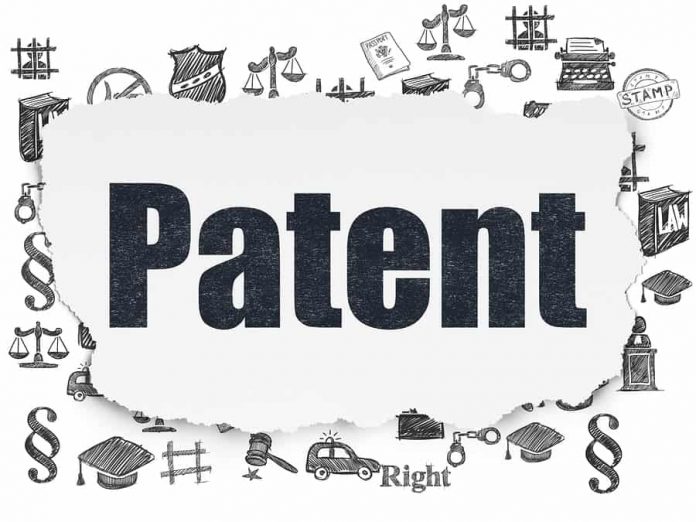This article is written by Anshal Dhiman. The article talks about the patent right infringements related to export and use under the Indian Patent Act.
Table of Contents
Introduction
Patent infringements are concerned with Intellectual Property Rights, and are covered well under Indian law, except for some unclear provisions. These provisions have not been easy either for the patent owners or for the judiciary, who have to interpret the laws. The general understanding of the meaning of the word ‘export’ is to sell some services or some product which is based in one particular country, to another. The word ‘use’ is understood as deploying something to do something. The basic meaning of both words is simple, and it is tough to confuse the meaning of these two. In law, however, some terms do get confused with each other. This article will also talk about the interpretation of the Delhi High Court whereby it held that export of a product from India will amount to use of the product in India, in an order given in December 2020, along with provisions related to the matter
Indian Patent Law
- Indian Patents Act, 1970 or the Patents Act, 1970 is the law that regulates patenting in the country. Before the 1970 Act, patenting in India was regulated by Patent and Designs Act, 1911 which covered the patent regime under British India.
- After the country got independence from the British, the government looked to bring reforms to the prevailing patenting laws, and for the same reason, a committee was set up in 1949 under the leadership of Justice Bakshi Teg Chand.
- Again in 1957, another committee was set up which aimed to take another complete look at the prevailing patent law, and revoke it and bring in a fresh law that would regulate patent-related matters in India.
- This led to the eventual and currently the Indian Patents Act of 1970 which is in force. In the procedure for registering the application for the award of a patent, a solicitation for assessment is needed to be made for assessment of the application in the Indian Patent Office within four years from the date of the need of the application or from the date of documenting of the application.
- After the main assessment report is given, the candidate is granted a chance to meet the objections brought up in the report. The candidate needs to respond to them within half a year from the issuance of the main assessment report which might be stretched out for additional 3 months on the solicitation of the candidate.
- In the event that the prerequisites of the main assessment report are not conformed to inside the recommended time of 9; months, at that point the application is blessed to have been deserted by the candidate. After the expulsion of complaints and consistency of prerequisites, the patent is allowed and informed in the Patent Office
Section 47(3) of the Patents Act
This particular section has been in controversial views for some time now. Section 47(1) and (2) allows the government to use or import itself or on behalf of any such article, machine or apparatus that has been patented by the authorities under the Patents Act, or any process which has been patented under the present Act. Section 47(3) allows the government to make, import or use any such article, apparatus or machine or any such process which has been patented under the Patents Act, 1970 for research and experiment purposes. The section acts as an exception to patent infringement in the country. It has been viewed in a controversial sense in recent years because here the scope of research and experiments has not been defined, and it is not clear as to how the patent rights of the owner of any such process or article are not being violated by the will of the government. Another issue with the provision is that there have not been any instances where the judiciary has interpreted only the scope of Section 47(3) in the context of research and experimentation, as most cases that are related to this provision are concerned with government tenders in one way or another, which eventually becomes the main issue of the case.
Section 48
Section 48 of the Patents Act confers some rights upon the owner of a patent. Section 48(a) grants to an owner of a patent the right to prevent any third party for using, selling, exporting his/her patented product or article without his patent. Section 48(b) provides similar rights to an owner of a patented process used to make any article or product, to prevent any third party from using, sell, and import it without the consent of the owner of the patent. The provisions seem very simple and are simple to understand, but we will understand it in the context of Section 107A, will be talked about below.
Section 107A
Basics
Section 107A is somewhat similar to the provision given in Section 47(3) of the Act. It says that any act which includes using, selling, or importing any patented product in the country, for the mere purposes of development and research and to submit data about the said patented product to the government of India or any other country which might regulate the manufacture of similar products, will not be counted as an infringement of patent rights. Likewise, the importation of protected items by any individual, from an individual who is properly approved under the Law to create and sell or convey the item, will not be considered as an encroachment of patent rights. The motive of the provision is to prevent monopoly in any market where such a product might be used, but again, the terms research and development are not clearly mentioned in the act and have been left up to the judiciary’s interpretation of the law. The provision acts like a bolar exemption.
Bolar provision
Bolar provision is protection utilized against patent encroachment. At the point when creation is made, it is either utilized or sold by an outsider for specific purposes for additional innovative work. Along these lines, this arrangement expects outrageous significance in light of the fact that the nonexclusive medication makers, who try to help their business in the market not long after the expiry of the trailblazer organization’s patents, through the utilization of Bolar arrangement have the essential time and opportunity for directing examination on the item while the patent being as yet legitimate.
View of the judiciary
Bayer Intellectual Property GMBH in 2019 filed two petitions seeking to protect their patent rights. First was a writ petition in the Delhi High Court which requested the court to stop all exports of sorafenat by NATCO which Bayer alleged was an infringement of their patents. While this petition was still pending in court, Bayer filed another suit which requested an injunction against Alembic Pharmaceuticals making, selling, exporting anything related to ‘RIVAROXOBAN’, which they alleged it infringed another patent of Bayer.
The court held that “deal” under Section 107A(a) incorporates export. It also held that the export of the drugs for instruction also, information gathering reasons for existing is in accordance with the worldwide agreement on excursions and furthermore covered under the protected right revered under Article 19(1)(g). Along these lines, the court discarded Bayer’s requests saying that deal for the reasons recommended in section 107A would not be an encroachment and along these lines can’t be forestalled.
The court dismissed Bayer’s understanding of the arrangement and held that the arrangement can’t be deciphered in a prohibitive way to mean the exchange of just data and not of the licensed item itself from India to different nations. The court held that the key is to decide the motivation behind the deal, for example, the target of continuing trial, examination and creating data. The arrangement can’t be deciphered in a limited way. The Court likewise thought to be the set of experiences and the item behind the institution of Section 107A and held that Section 107A is a free arrangement and can’t be perused as a stipulation to Section 48 and consequently, its degree can’t be restricted.
Exports as “use” under Patents Act
View of the court
The Delhi High Court, in the matter of H Lundbeck vs. Hetro Drugs Ltd. held that export of products from India would amount to the use of products in India. Although the court did not specify the explanation for the said order. The topic for this situation was an upper patent named “Drug Structure Involving Phenyl Piperazine Subordinates as Serotonin Reuptake Inhibitors” and conceded security on 27/01/2009.
The medication’s global nonproprietary name (Hotel) is Vortioxetine. The advocate of Lundbeck affirmed that the respondent imported the Programming interface Vortioxetine threefold in 2016 and in this manner sent out considerable amounts of Vortioxetine Hydrobromide to different nations prominently Canada and a couple of other Latin American nations. It further affirmed that defendant no. 2, whose identity has been kept secret for some reason. looked for ecological leeway to extend the Respondents’ assembling limit of Vortioxetine Hydrobromide.
A claim of the plaintiff charging encroachment by the defendants is that the defendants are assembling and sending out significant amounts of conventional adaptation of VORTIOXETINE to Latin America and Canada. According to the plaintiff, on examination led through an autonomous researching office, it is uncovered that the defendants had imported the Programming interface Vortioxetine threefold in 2016 and are occupied with fare of generous amounts of Vortioxetine Hydrobromide on various events by trading to different nations.
Further, defendant No.2 has looked for ecological leeway at Telangana to grow the assembling limit of the defendants’ unit in that and among the rundown of items freedom is looked for, the item under the name Vortioxetine Hydrobromide is likewise included. Learned insight for the defendants expresses that the defendants are not utilizing the item in India yet sending it out for the reasons for innovative work purposes. In any case, right now, there is no material to arrive at this resolution that this considerable measure of fares is just for innovative work purposes. Further, under Section 107 of the Patents Act, fare of the items from India would add up to utilization of the item in India.
The respondents disproved the charges and guaranteed that they aren’t utilizing the item in India, rather are trading it for the reasons for innovative work. The court dismissed the guard of the respondents, holding that the respondents didn’t give any proof to demonstrate that the significant segment of the respondents’ fare was used in innovative work. The court in the current case didn’t explain the reasoning behind building up why fare of a decent will be considered as utilization in India. In like manner speech, the term ‘send out’ is related with selling, or shipping for the reasons for selling, of an item starting with one country then onto the next country. In this way to see it as a “utilization” of the item inside the selling nation remains in inconsistency with the “extraterritorial” nature of the actual word.
Bolar exception
In India, the Bolar exception is relatively more extensive than its US equivalent. While the US arrangement confines the protected harbor accessible to conventional makers to making, utilizing, offering available to be purchased or selling the licensed creation exclusively for utilizes that are sensibly identified with the turn of events and accommodation of data under US government law in the United States just, its Indian partner doesn’t determine such regional cutoff points. Along these lines, a deal, regardless of whether outside India, will fall inside the compass of Section 107A, in the event that it is sensibly identified with the turn of events and accommodation of data needed for administrative endorsement under the law of the country in which the deal happens.
Conclusion
It is seen above that the patent law in India has not been defined clearly in simple terms, which has made things complex for people involved for quite some time now. The cases discussed above show how the judiciary’s interpretation of the confusing clauses in legislations have also proven to be not good enough. With such variance in the law, it will only create trouble for people in the country to protect their patent rights. The idea of preventing monopoly with the laws is not a bad mindset to be working with on such matters, but when rights of people are concerned, especially Intellectual Property Rights, there must be definite terms in the laws.
References
Students of Lawsikho courses regularly produce writing assignments and work on practical exercises as a part of their coursework and develop themselves in real-life practical skill.
LawSikho has created a telegram group for exchanging legal knowledge, referrals and various opportunities. You can click on this link and join:
 Serato DJ Crack 2025Serato DJ PRO Crack
Serato DJ Crack 2025Serato DJ PRO Crack











 Allow notifications
Allow notifications



